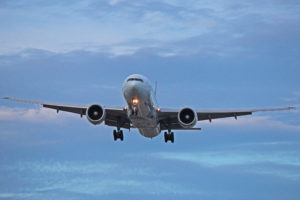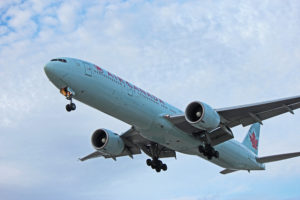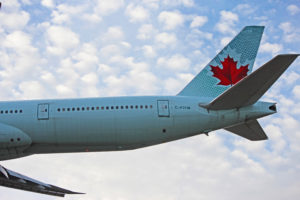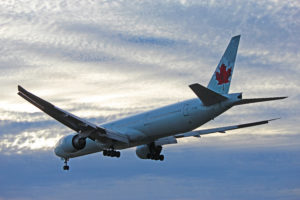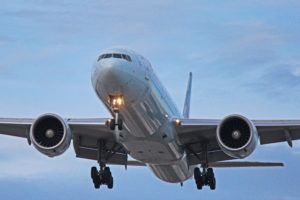 The poster child aircraft for keeping your seat belt on while flying. Twice, in C-FIVM’s nearly decade of flying with Air Canada, crew have been injured due to turbulence (more on that below). We photographed the Boeing 777-300ER while plane spotting at Toronto Pearson International Airport (YYZ) on October 22, 2017.
The poster child aircraft for keeping your seat belt on while flying. Twice, in C-FIVM’s nearly decade of flying with Air Canada, crew have been injured due to turbulence (more on that below). We photographed the Boeing 777-300ER while plane spotting at Toronto Pearson International Airport (YYZ) on October 22, 2017.
For full-size, high resolution versions of any of the photos in the image gallery, simply click on the individual pictures. See below for more detailed information on C-FIVM, the Boeing 777-300ER model in general and the airline.
Image Gallery
C-FIVM
Boeing 777-300ER
Air Canada
Resources
C-FIVM Air Canada Boeing 777-300ER Image Gallery
C-FIVM
C-FIVM took its first flight on May 1, 2008 and was delivered to Air Canada on May 13, 2008. The Boeing 777-333ER is one of 19 in the AC fleet and is configured for a maximum total of 400 passengers with 40 seats in business class, 24 more in premium economy and 336 in economy class. This is the largest airliner in the Air Canada fleet.
On May 25, 2012, the aircraft experienced a potential problem. Flying from Tokyo, Japan to Vancouver, British Columbia, C-FIVM was about 430 miles out of YVR when the crew reported an acrid smell in the cockpit with possible smoke in the cabin. The flight landed safely in Vancouver about an hour later. The acrid smell was attributed to the inflight entertainment system.
On July 10, 2012, C-FIVM was flying from Toronto, Ontario to Beijing, China. On approach to Beijing, the airliner experienced moderate turbulence. Three flight attendants, who were busy securing equipment in the mid galley, were injured. One of the crew was taken to hospital while the other two were treated at the airport.
Just under a year ago, on December 29, 2016, turbulence once again caused injuries. Flying from Beijing, China to Toronto, the Boeing 777-300ER ran into short but severe bouts of clear air turbulence about 400 miles north of Khabarovsk, Russia. One of the flight crew had their head strike an overhead map light, resulting in lacerations. The flight continued safely to Toronto.
Boeing 777-300ER
Now the largest aircraft in many fleets around the world, the Boeing 777-300ER was introduced with Air France in 2004, nearly a decade after the first 777 variant entered service with United Airlines. The airliner is 74 metres or 242 feet in length with a wingspan of 65 metres or 213 feet. At the tail, the airplane stands 19 metres or 61 feet in height. The maximum flight range is 13,650 kilometres.
Air Canada
Air Canada was founded in 1937 as Trans Canada Air Lines, under the ownership of the Canadian National Railway. On January 1, 1965, the name changed to Air Canada. The airline is headquartered on the grounds of the Montreal Pierre Elliott Trudeau International Airport (YUL) in Dorval, Quebec. They are a founding member of the Star Alliance, along with Lufthansa, Scandinavian Airlines, Thai Airways and United Airlines.
AC has around 175 aircraft in the main fleet with nearer to 400 when including subsidiaries. They fly to over 200 destinations worldwide (350 with subs). The largest in the fleet is the Boeing 777-300ER while the most numerous is the Airbus A320-200.
Resources
